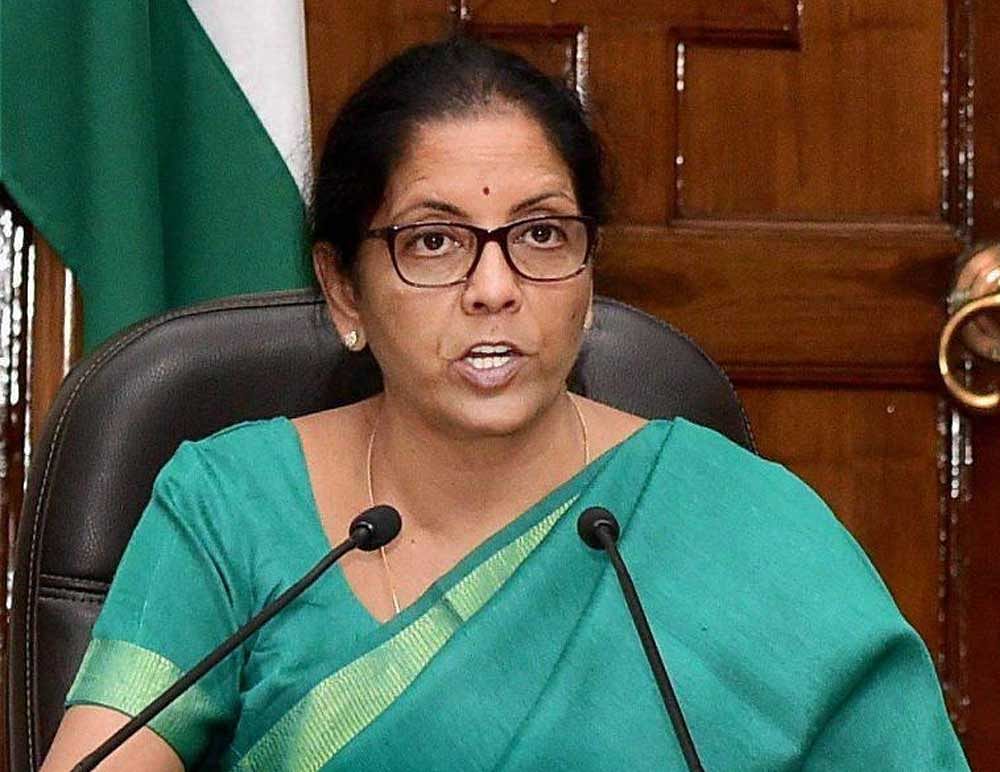
India's first full-time woman finance minister Nirmala Sitharaman will have many problems to deal with when she presents her maiden budget in Parliament on July 5, 2019. She will, however, escape the difficultly of spiralling oil prices, which has haunted most finance ministers.
Oil aside, she will have to explain a five-year low economic growth, a 45-year high unemployment, a 15-year low in investments for new projects, double-digit decline in automobile sales and falling tax collections to name a few.
However, India is not grappling with high oil prices and the outlook for oil in the coming few months is also not rising. Lower oil prices means less pressure on inflation, subsidies, current account deficit, trade deficit and finally less pressure on the Reserve Bank of India to lower interest rates.
Since a large part of India's economy hinges on oil prices, finance ministers who present the budget during a bear run call themselves lucky. Former finance minister Arun Jaitley was one. Crude oil prices crashed from a high of $ 147 per barrel to $ 49 per barrel soon after Modi government took over in 2014.
In 2019 too oil prices have been falling on the back of a slowing global economy and escalating trade war fears. Crude oil has followed suit. On July 2, despite the OPEC countries agreeing to extend oil supply cuts until March 2020 – in order to prop up oil prices amid weakening global economy and soaring US production – oil markets are still in a bear run.
OPEC and its allies led by Russia have been reducing oil output since 2017 to prevent prices from sliding after the US upped production, overtaking Russia and Saudi Arabia, who were the world’s top producers. But to no avail.
Oil prices fell more than 4 per cent on July 2 on the back of weak manufacturing data that worried investors that the demand for oil could take a further hit. The immediate impact was a gain in the shares of oil market companies. Oil is volatile and one cannot predict its prices in the long run. For the medium term, the market is hoping that crude will behave in a range bound manner.
“We believe that price of Brent will be in the range of $ 63 to $ 68 per barrel in the coming few months,” said Care Rating in its outlook.
The OPEC Group has been successful in bolstering the oil prices but increase in the US production and stockpile data has often undermined the group's efforts.
“We believe US production will rise as the current US government has vested interest in keeping oil prices low on account of elections next year,” Care Rating said.
India will remain cushioned as long as US is successful in keeping oil prices muted, be that due to the trade war or tension with Iran.
Only in April-May, the outlook for oil prices was much higher when the Trump administration was on its way to tighten sanctions on Iran and Venezuela, the two leading producers. Oil watchers speculated that prices could hit above $90 a barrel. But the fear of trade war turning into a currency war very soon and global growth hitting a low has changed the outlook.
After OPEC supply cuts, Morgan Stanley has cut the long term Brent price view. The bank lowered its long-term Brent price forecast to $ 60 a barrel from $ 65 a barrel earlier.
India is a net importer of crude oil and ships more than 82 per cent of its domestic consumption from abroad. The payment is made in dollars. So when the global crude prices are higher, the dollar outgo too is higher even if consumption remains the same. That has a direct impact on the foreign exchange reserves, which keeps depleting. The second round impact of the depleting foreign exchange reserves is felt when the trade and current account deficits go up, inflation spikes, the government has to pay more for subsidies of food, fuel and fertiliser and, the RBI is constantly under pressure to cut interest rates.
The government and RBI too have been working with $ 70 to $ 75 per barrel for the crude oil in the current fiscal, implying if oil remains lower, it is a net gain for the government in 2019 and beyond.
This makes Finance Minister Nirmala Sitharaman lucky. Quite like her predecessor. When she goes to present the Union budget on July 5, she can wear a smile on her face on this count for sure.
